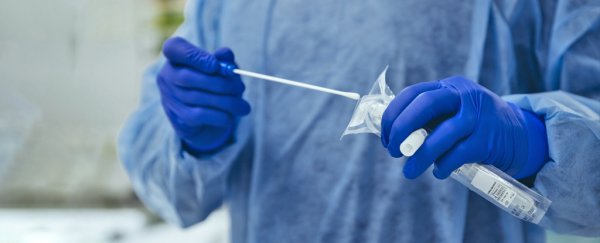The aphorism "perfect is the enemy of good enough" has been played out to tragic effect in the US's inadequate testing for the coronavirus, according to researchers calling for quick tests that cost only about a dollar each, and which may not be as accurate but can be carried out several times a week by the whole population.
Michael Mina, assistant professor of epidemiology at Harvard University, has for weeks been pushing for what he calls "crappy" tests.
His idea is to move away from the current high-precision molecular tests, known as PCR tests, which are still scarce in large swathes of the country and which people often have to wait hours to get done, and then have to wait days - or up to a week - for the results.
He has called for the Food and Drug Administration (FDA) to authorize the sale of rapid tests which can be done out at home using a strip of paper that changes color in a quarter of an hour to give a result, similar to a pregnancy test.
Or, alternatively, FDA can release their stranglehold over screening tests and allow other public health agencies (ie county / state) to decide what can be done
— Michael Mina (@michaelmina_lab) July 26, 2020
There are many ways to use screening to control outbreaks - but none can occur within the existing approved structures
These tests have a low sensitivity, which means they miss a lot of positive results, and hence give a lot of "false negatives."
But for Mina and other experts, such a strategy would be more effective in terms of public health because across the whole population, the number of cases identified would be higher than under the current system.
The quick tests tend to be good at detecting people who emit a large amount of virus, which is when they are more contagious, right at the beginning, while the PCR tests are very sensitive and can detect even small concentrations of the virus, when people are no longer as contagious.
"We're so focused on high-end expensive tests that we're not testing anyone," said Mina in the podcast "This Week in Virology."
"Maybe we only need a really crappy test,' he said.
"If it's cheap enough to use it very frequently, then if it doesn't detect less than five percent of people when they're transmitting, maybe it detects 85 percent of people when they're transmitting. And that's a huge win over what we have right now."
The head of Harvard's Global Health Institute, Ashish Jha, touched on the subject on Monday.
"They're not actually crappy tests," he told reporters. "In certain circumstances they are not so sensitive when you have very low amounts of virus, and you're not doing much spreading. But when you're actually really infectious, you have large amounts of virus in your throat elsewhere and the test becomes much, much better," he said.
"From an epidemiologic point of view, that's when you want to capture people. You want to get them when they're infectious," he said.
Even if rapid tests miss half the cases, it is likely that with two tests a week, they will end up detecting them.
It must also be noted that the current system is thought to be missing nine cases out of ten because so few people are being tested, according to estimates by the Centers for Disease Control and Prevention.
The FDA has still not authorized the sale of any of the paper strip tests, which would cost between one and five dollars.
"I'm worried that our federal government is still stuck in a mental model that doesn't make sense for this pandemic," said Jha.
